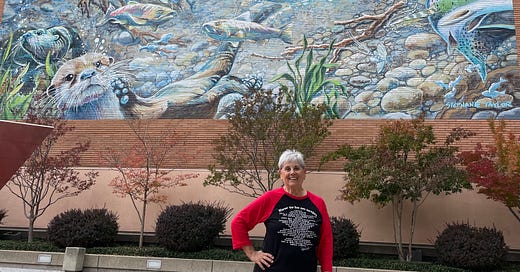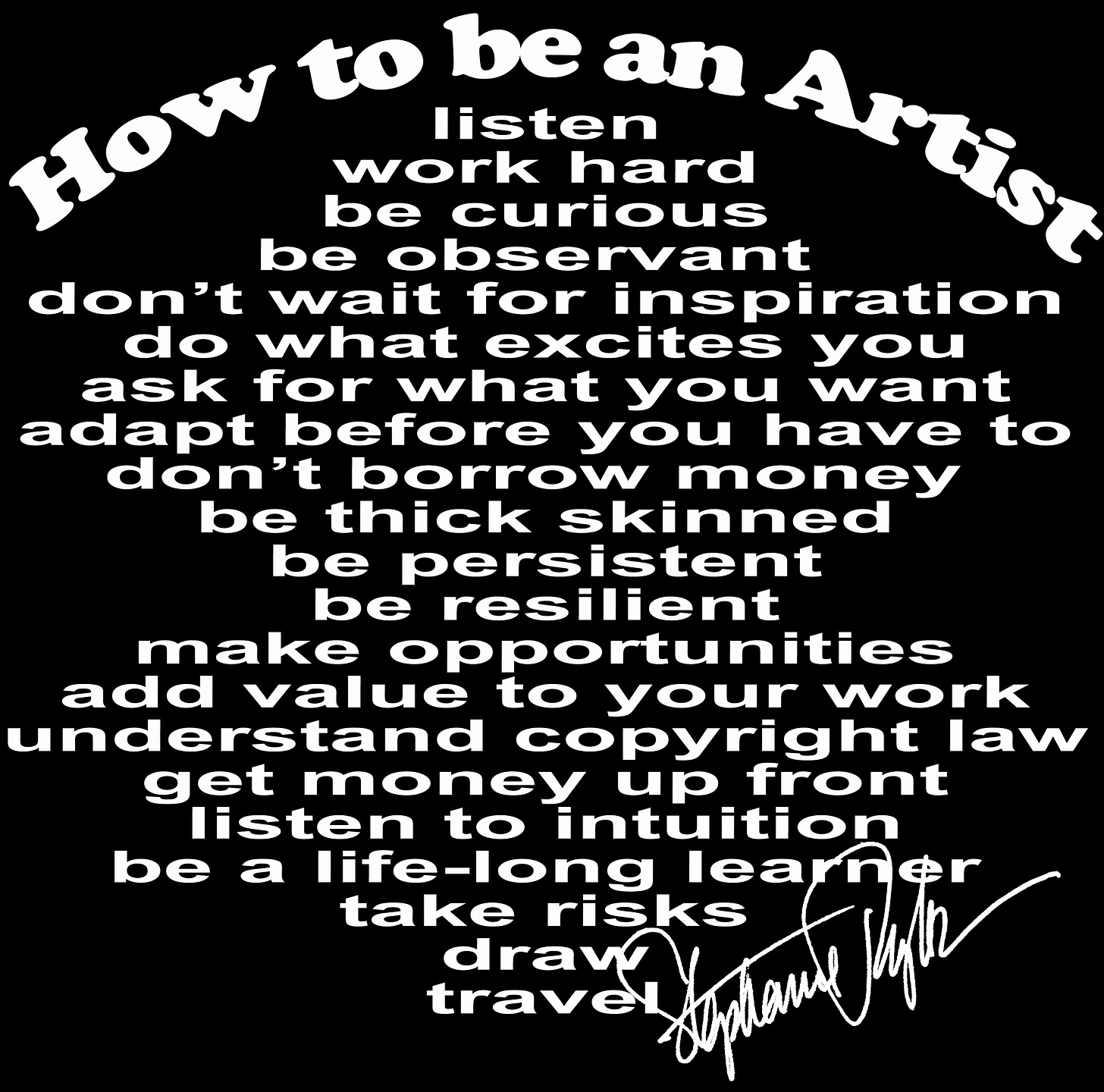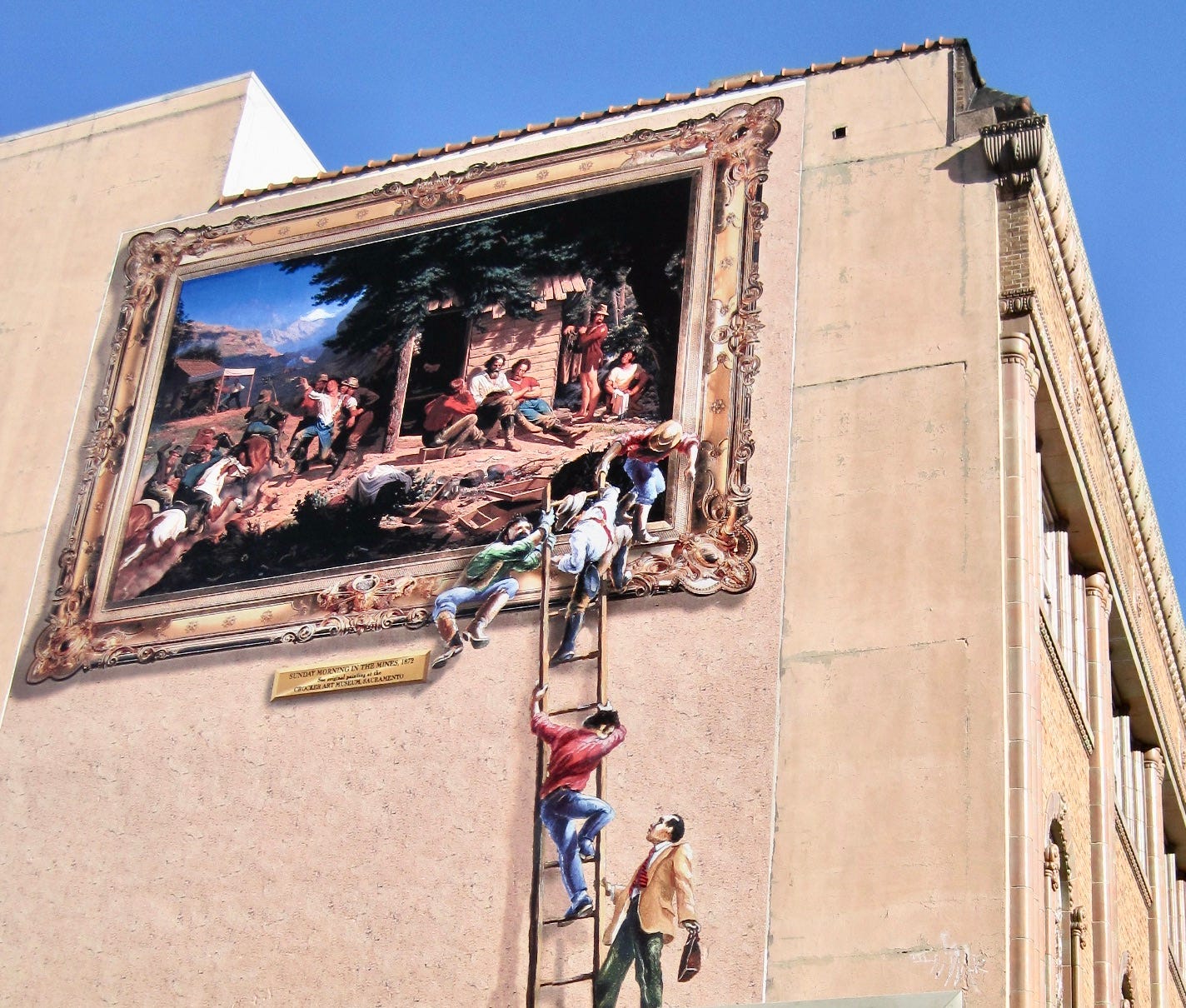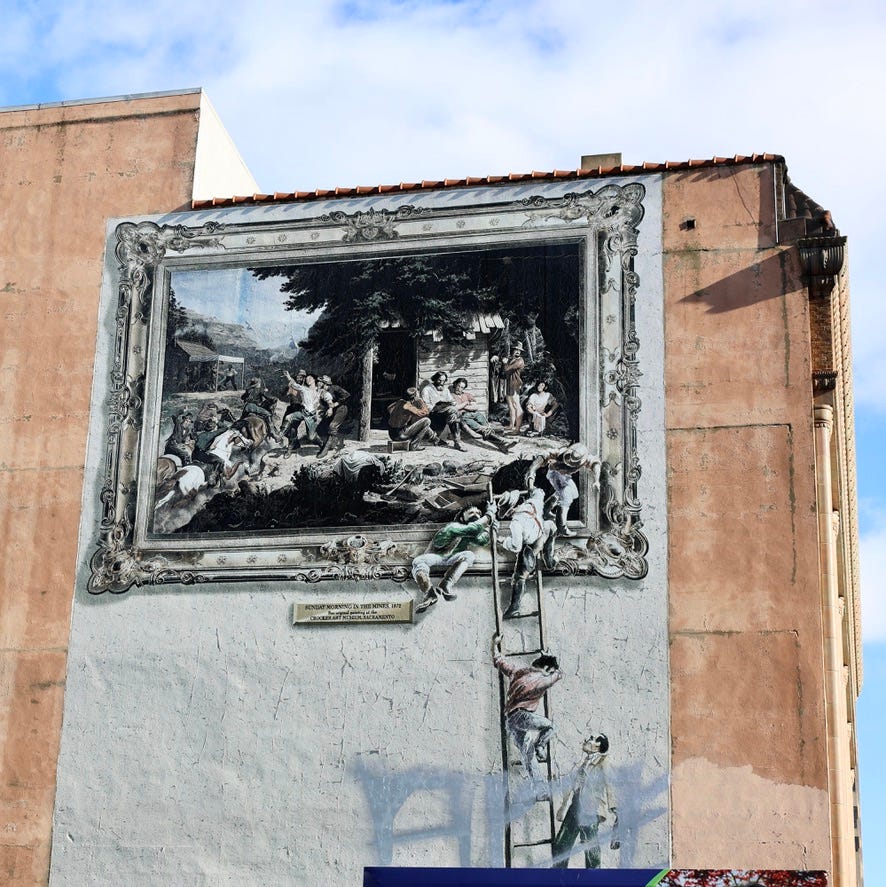Adaptation
OK, I’m getting old, and that’s a good thing. I’ve been making a living as an artist/designer since I was in high school and, since 2011, as an essayist. Now I’m looking back and trying to find what it all means. It’s an interesting process, like writing a memoir, starting with an outline. All this while raising three kids and trying to keep a marriage together. The kids are great. The marriage wasn’t. I’ve had successes, setbacks and failures.
Here’s what I’ve learned.
"In the beginner's mind there are many possibilities, but in the expert's mind there are few." Zen master Shunryu Suzuki (a book to be read ASAP)
Essential rules for surviving as a creative. I thought I’d make a list to share, but the list keeps growing.
I can’t look back at all the points where the trajectory of my career changed through no fault of my own: not helpful. All architectural projects stopped in 2001, and again in 2009 and longer. Covid? Wow. At least we survived. Large hospitality operations starting focusing more on investor returns than guest satisfaction in the late 90s, not wanting to spend money on original art. Cheaper to buy digital reproductions, and as I adopted that technology early, I’m partly to blame.
Adapt before you need to. In 1996, I realized I couldn’t be on the wrong side of the “digital revolution.” I knew I had to learn to use computers and Photoshop. Keep adopting new technology quickly. Example: iPadPro with Procreate drawing programs. Example: “Frankenstein: A Graphic Interpretation,” with the Sacramento Public Library.
I learned very early to ask for what I want. Example 1: My pay after a year with an advertising agency in LA was pathetic. I finally got up the nerve to ask for a raise. The owner asked how much I wanted and said yes when I asked for 25% more. Lesson: I should have asked a lot sooner and I should have asked for even more. Example 2: I wanted to be an Op-Ed contributor to the Sacramento Bee. Pitched an editor one time: ignored. Pitched again and he gave me a chance.
My dad, a small businessman who should have been a lawyer like both his father and grandfather said, “Never let a client owe you money because as long as he does, he won’t do business with you.” I always judged him, as wonderful a dad as he was, to be an underachiever compared to his intellect, but at the end of his life, he had no regrets. That’s more than what I’ll be able to say.
Maybe I didn’t have the talent to make it as a big-time gallery or museum artist but I know I didn’t want to make work that didn’t sell. I got up my nerve to ask for a meeting with an important gallery in San Francisco. The owner said he’d give me 10 minutes but didn’t want to hurt my feelings. I said he couldn’t hurt my feelings. He asked me why I’d want to give up a fulfilling career working on fun projects to make a “body of work,” to maybe get a gallery, maybe not, maybe sell or not sell. He was right. I always get 50% up front.
Be patient. I had the idea of following water one drop at a time in 2000, on a trip to Norway and on a second trip in 2007. I made a small sculpture, “Drop by Drop,” but really wanted to full an entire space. I got my chance in 2015.
Diversify. What I’ve learned writing about the California environment. Diversity is critical. Monoculture is deadly. Embrace change.
Intuition has served be well, better in my professional life, with so much artistic freedom on incredible projects, than my private life. But then it’s easier to change clients than to change partners.
When to give up.
Using the teeshirt as an example, I spent a lot of time creating a web-based shop around 2020. It didn’t work for a variety of reasons. I kept paying a monthly fee thinking that I’d make the time and effort to market the shop. I haven’t, so I just cancelled the shop. For now. Finding a partner to collaborate with and market is a better idea.
What’s coming?
We creatives don’t know but it’s not looking great. Some Opinion artists like Ann Telnaes are getting cancelled. Others, like Jack Ohman (a friend), are moving on. I know I’ve always had a (literally) large-scale career, starting with billboards in LA. Making art that stays in public view for many years is important to me. Not a gallery show that disappears in a month, but murals and sculpture with endurance, until destroyed by a client or by the weather. BOOKS! Books stay. So more books are what’s coming for me.
Please support my work to get my own books updated and published, and to help others do the same.







I so love your work.
What really jumps out in this essay is the deeply pragmatic yet soulful approach to creativity. How it isn’t just about inspiration but also about knowing when to pivot, adopt new technology, or ask for what you want. As a fellow creative (in both writing and music), I connect strongly with that sense of perpetual adaptation. The tension you highlight between creative idealism and business sense feels very relatable. It’s striking how you can talk frankly about compensation (like getting 50% upfront) yet still hold onto the passion for large-scale art pieces and the dream of publishing enduring books. That dual mindset echoes my own experience in music production, where you strive to keep the artistry intact while remaining aware of financial realities. It's your reflections on legacy, creating public art that won’t just vanish in a month, and writing books that persist that hits close to home when I pour myself into something that might outlast me. It underscores that ultimate drive to leave a meaningful imprint, whether it’s a mural, a sculpture, an essay, or a piece of music. That’s a sentiment I think all creatives share, no matter our medium: we want our efforts and vision to stick around for someone else to discover long after we’ve moved on to the next project or stage in our lives.